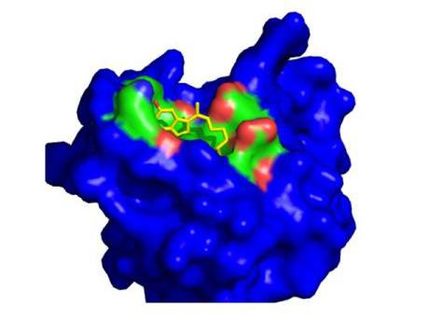Bayer Strengthens Research and Development
Pharmaceutical pipeline is well filled, with 50 projects currently in phases I to III of clinical testing
Advertisement
The Bayer Group is to further expand its research and development activities despite the current financial and economic crisis. “The task now is to set the right course. Only through innovation can our company generate the growth that is essential to safeguard its sustained success,” said Werner Wenning, Chairman of the Board of Management of Bayer AG. In 2008 the company’s research and development budget is at around EUR 2.8 billion. “This represents the biggest R&D budget in Germany in the chemical and pharmaceutical sector – and amounts to about five percent of all research and development spending by German industry as a whole,” explained Wenning. Bayer will continue in the future to commit itself to strong research and development.
Across all its subgroups Bayer is well prepared for the social trends of today, according to the company – in particular the expanding world population and the increasing scarcity of resources. The demand for food and health care will further grow. Climate protection too will remain a top priority in the future. “Bayer can make a contribution to meeting all of these challenges,” said Dr. Wolfgang Plischke, who is the member of Bayer AG’s Board of Management responsible for Innovation, Technology and Environment.
The pharmaceutical development pipeline is well filled, with 50 projects currently in phases I to III of clinical testing. In addition, the company plans to bring ten new crop protection active ingredients with a peak sales potential of more than €1 billion in total to market in the period from 2008 to 2012. Solutions for better climate protection are a focus of the company’s research and development activities in the area of high-tech materials.
In this context Bayer Chairman Werner Wenning called for comprehensive global patent protection. “The defense of intellectual property forms a necessary foundation for innovations. Reliable, global protection of intellectual property rights is essential for an inventor company like Bayer.” In total, Bayer lodged patent applications for a total of 774 inventions in 2007. The company achieved about 40 percent of its sales with patented products and processes.
Bayer HealthCare: Focus on diseases requiring highly innovative solutions
Among outstanding Bayer developments is the anticoagulant Xarelto®, which is already the most thoroughly investigated Factor Xa inhibitor in clinical development. It is planned for more than 60,000 patients to take part in the clinical development program for Xarelto®, which was granted regulatory approval in Canada and the E.U. in 2008. The product, taken in tablet form, can now be administered for prophylaxis of venous thromboembolism following elective hip or knee replacement surgery in adult patients. Clinical studies for further indications are already in advanced phases. This innovative drug has an annual peak sales potential of over EUR 2 billion.
Progress has also been made in the indication cancer: Alongside the drug product Nexavar®, approved for the treatment of kidney and liver cancer and currently being investigated in more than 200 clinical studies with regard to its use in treating other forms of cancer, Bayer has also expanded its research activities in the field of oncology. Examples include a strategic alliance with the German Cancer Research Center in Heidelberg and the acquisition of Cologne-based biotech company DIREVO, which complements Bayer’s preclinical pipeline and adds to its biological research expertise. Bayer Schering Pharma is already among the world’s ten leading biologicals companies.
Another biopharmaceutical in Phase III clinical testing, since 2007, is the active ingredient VEGF Trap-Eye for the treatment of wet age-related macular degeneration. Progress has also been made in the development of two cardiovascular active ingredients: riociguat for the treatment of thromboembolic and arterial pulmonary hypertension and cinaciguat for the treatment of acute decompensated heart failure.
Bayer CropScience: Safeguarding nutrition for a growing world population
Bayer CropScience too is backing innovations: With young products based on active ingredients introduced to core markets since 2000, Bayer recorded currency-adjusted sales growth of 44 percent year-on-year in the first three quarters of 2008. These products account for about 30 percent of agrochemical sales at Bayer CropScience. The sales target from this launch program of EUR 2 billion might already be achieved by the end of 2009.
The most recent example is the pest control agent Movento®: The new insecticide spirotetramat was granted regulatory approval in its first strategically important markets – the United States and Canada – in 2008 and is scheduled to be distributed in over 70 countries. In the medium term, products based on this active ingredient are expected to have an annual sales potential of some EUR 200 million. This substance has a unique “2-way systemicity.” It is distributed upwards and downwards in the plant and extends to areas which are otherwise difficult to reach. This generates systemic and long-lasting protection against sucking pests while protecting beneficial organisms.
Between 2008 and 2012, Bayer CropScience intends to invest a total of EUR 3.4 billion in research and development. Roughly EUR 2.7 billion of this will go towards research into innovative crop protection active ingredients. In the same period the company plans to invest some EUR 750 million in the development of new solutions for seed and plant biotechnology. Besides the traits that have already been introduced, such as insect resistance and herbicide tolerance, research in this area in the future will focus more heavily on goals such as increasing yields and making plants stress-tolerant. “In view of the impending climate change, plant biotechnology will play an increasingly important role,” said Wenning.
Bayer MaterialScience: Innovative solutions for improved quality of life, climate protection and conservation of resources
New applications, environmentally friendly production methods and customized product solutions are at the center of Bayer MaterialScience’s R&D activities. Process optimizations such as in chlorine and TDI manufacture are significantly reducing energy use and thus leading to reduced CO2 emissions per metric ton of product. In addition, nanotechnology is opening up a large number of new possibilities. Through the use of Baytubes, carbon nanotubes from Bayer, materials can be made extremely stable and strong at a considerably reduced weight. Rotor blades for wind turbine plants, for example, can be made more energy-efficient.




























































